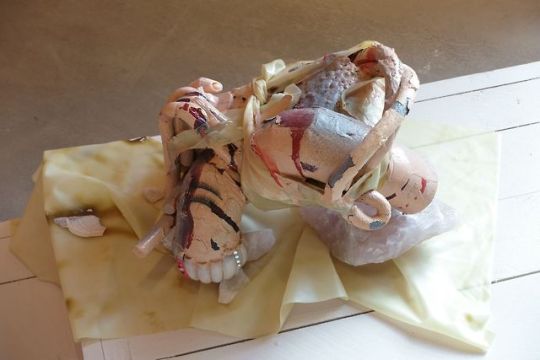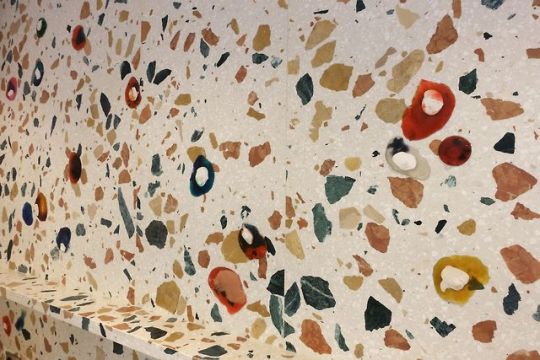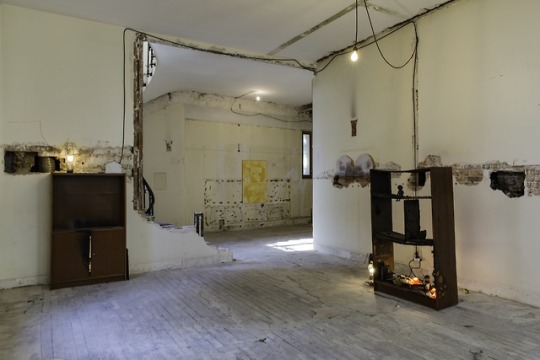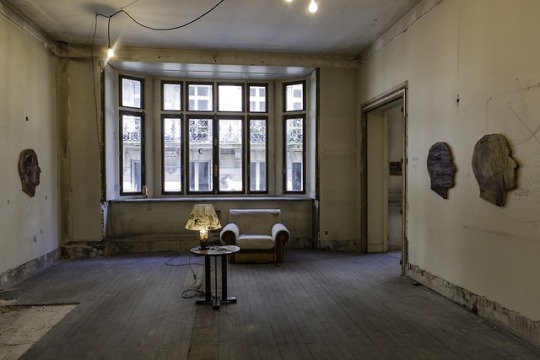#gmwrites
Text

0 notes
Text
Буду иногда сохранять сюда идеи и обрывки фраз, чтоб не потерять
------------------------------------------------------
"Ты ведь понимаешь, что пути назад не будет?"
Она сидела в мягком кресле и внимательно смотрела на своего редактора.
Конечно, она все прекрасно понимала. В свои двадцать семь Селина была довольно популярным писателем и автором нескольких семейных бестселлеров о чистой любви, поддержке,
Но то, что вышло из ее пера на этот раз, пугало девушку не меньше, чем ее редактора
Дерзкий, смелый, откровенный - этот роман был похож на человека, вдохновившего ее написать это...
Она понимала, что книга слишком смела для ее аудитории, что она испортит свою репутацию. Но что поделать, она не писала эту историю "в стол" и не собиралась ее там оставлять. Редактор предлагал ей напечатать под псевдонимом. Но девушка представляла, как человек, вдохновивший ее на роман, возьмет книгу в руки, увидев ее имя на обложке, нагло ухмыльнется и неважно, что будет дальше. Он сочтет ее трусихой, если она возьмет псевдоним!
0 notes
Photo








The Community Live in Nottingham
By Reeme Idris
An exhibition in the form of a four week long workshop with Ethan Assouline, Laëtitia Badaut Haussmann, David Bernstein, Tenant of Culture, Cyrus Goberville, Philippe Hallais and Ruby Hoette.
The Community is currently presenting a four-week long workshop at the Bonington Gallery (situated within the Bonington building at Nottingham Trent University) that acknowledges and interacts with the surrounding educational context of the university. The Community Live in Nottingham exhibition evolves each week and the closing will become the opening of the show.
The Community is a Paris-based multidisciplinary art institute, established by a collective of eight in 2016. Tuukka Laurila (Founder and Director) explains how The Community’s methodology is being extended to the UK.
‘The Community Live in Nottingham is part of an ongoing exploration of actively studying The Community’s founding principles and values including multidisciplinary approach in emerging arts, inclusive alternatives for 'white cube' galleries, operating models as a small not-for-profit art institute, and collective working with a fundamental focus on community-based approach and collaboration. The Community’s vision offers an alternative to the traditional thinking where the different disciplines of art, fashion, design, publishing, and music are categorized independently.’
Laurila elaborates, ‘The title ‘The Community Live in Nottingham’, takes inspiration from the phenomenon where musicians and bands go to a particular country, place or location to work on a project. It reflects how The Community is dynamic and local where it appears, and adapts together with the surrounding people to the new environment to continue its practice while The Community is simultaneously highly influenced by that specific location, time and surrounding energy.’
In 2017, The Community developed their collective installation for the Umwelt Mode exhibition in Basel. With curator Thomas Jeppe, they decided to work with four artists - two with an artistic background and two a fashion design background. Through a dialogue with the artists about the show and the location, pieces were selected and artworks were received from all artists in advance, to create an installation for the exhibition as a collective. The Community took its inspiration from Adventure Playgrounds:
“Adventure Playgrounds (different names in different countries) are a long-going Central-European tradition in which children are given the opportunity to build a playground as they see the best fit. In many ways, they are the antithesis of many contemporary structures (economic, political and social) as adventure playground lack of any logic or planning with the only rule being adult supervising to keep the structures safe. Some of these playgrounds have been going for decades (such as Kolle 37 started in 1990 in Berlin). These structures are great examples of what open-minded, not-over thought creation can produce.”
Since 2016 The Community has established specific characteristics that are recognized from the outside in its working methods, aesthetics, and as well as artistic and curatorial direction. Laurila refers to The Community’s internal brief for the collective installation and collaboration, “The installation follows the rules of an adventure playground: anyone can build anything, together or alone. Everyone must participate.”
Collaborative to a point of folding in on itself, The Community Live in Nottingham brings these characteristics with it. The exhibition is divided into four perspectives, with each emphasized over a one week period.
He continues, ‘The themes are based on the concept and the proposed artists. Each week the exhibition reflects the previous week and continues to develop on top of the already existing work. The end result is open, and the show can take different directions based on the workshop participants.’
A diagrammatic layer cake documenting the residents of Nottingham, Ruby Hoette’s Pattern mapping Residency took place during the second week of the exhibition. Ruby explains, ‘I worked with Karen Harrigan (professional pattern-maker and cutter) and Dr. Juliette Kristensen (design researcher, writer, and historian) to re-imagine clothing as ‘landmarks' capturing each garment through the production of its pattern live in the gallery. Through these structural renderings of dress and the accompanying narratives that emerged through conversations, we gathered all the material for an alternative map of Nottingham. The garment patterns are displayed in the gallery until the end of the exhibition, after which they will be collated into a collective pattern sheet and publication.’
‘This process inverts the workings of the fashion industry, making public the mostly hidden process of pattern drafting and creating a collection from existing garments using their local significance as a leitmotif. It plays with the tensions and contradictions between individual expression, collective identity, mass-production and exclusivity that are inherently bound up in contemporary (fashion) culture.’
The exhibition provided Hoette with an opportunity for exposure of working processes that are often more siloed, ‘Rather than showing finished, static outcomes it allowed the audience and various community groups to become active collaborators in the experience and accumulation of content. The transformation of the gallery space into an active site of production as well as display allowed me to explore a new concept as part of visualizing fashion in context – a central theme in my practice.’
A Nottingham edition of Permanent Cuts, an experimental music session co-curated by Cyrus Goberville of Collapsing Market, will also feature a live performance by Philippe Hallais (created within the week of the Writer’s Club, in collaboration with Ethan Assouline) and thus completes the final layer of this, very much alive, exhibition.
Footnote:
The Community Live in Nottingham takes place 4th – 30th March 2019. With Ethan Assouline, Laëtitia Badaut Haussmann, David Bernstein, Tenant of Culture, Cyrus Goberville, Philippe Hallais, and Ruby Hoette, plus special guests.
For full artist and workshop details: www.liveinnottingham.thecommunity.io
#gmwriting#artsubmission#london#nottingham#gallery#artreview#artshow#contemporaryart#workshop#exhibition#ukart#londonart
0 notes
Link
New #hoboken tweet. RT @LittleCityBks: And if you're in Hoboken, you can start here! #independentbookstoreday https://t.co/tZ4nN3DcAg
0 notes
Photo








Sans titre (2016) to date.
By Reeme Idris
Following the nomadic project space since its Parisian apartment beginning with curator and storyteller Marie Madec.
Not content with exhibiting to a precious few, Marie Madec has enigmatically engaged artists and visitors alike with spirited shows since launching Sans titre (2016). Following her studies at the Sorbonne and CalArts she’s built the nomadic concept from her apartment in the 21st arrondissement, transforming it with the help of architect Maxime Bousquet into a fantasy of what a young collectors’ home might be. Mixing antique and contemporary furniture, collaborating with antique specialist Archibald Pearson, to build a salon for well known and lesser known talent. Vol.1 featured Théo Mercier, Romain Vicari, Elliot Dubail and Eliza Douglas.
The following exhibitions ‘Vol.2: ‘Curiosités’ and ‘Vol. 3: Nothing to hide’ explored sex and power. By way of a take on a cabinet of curiosities; a proud display of good taste and intelligence, also known as ‘wonder rooms’ and a vehicle for international exchange. The latter referenced the much-lauded 80s pornographic film of the same name. Themes connecting the shows included domesticity, intimacy, and voyeurism. Before venturing beyond the apartment - to an empty science laboratory in Marseille for ‘Vol. 4: Le Laboratoire’ - there was the 2017 collaboration with Nike ‘Switchers: the Air Biennale’.
Sans titre (2016) conceived a creative and artistic residency to capture the dawn of a new era for contemporary art in Paris, which had somewhat slumped in response to a lack of institutional support. Madec teamed with German painter and ceramicist Robert Brambora to create an artist residency in their Headquarters in Paris. Launched on 26th March 2017 (Air Max day) Brambora integrated an ephemeral studio composed of recyclable and construction materials. He invited six other European artists to join him.
Marie explained at the time, ‘This exhibition will present the product of the conceptual and aesthetic collaboration between the artists. They will take over an industrial building located in the 5th that was never opened to the public before. The artists will make their works interact with the glass and steel architecture.’ The exhibition presented work created during the residency. This was to be a significant collaboration (with Brambora) and an equally significant moment for Sans titre (2016) who were able to demonstrate a brand collaboration offering financial and infrastructural support to its artists via Air.
But Sans titre (2016) were far from the only ones building on this new momentum. For its third edition, contemporary art fair Paris Internationale radically shape-shifted from the ornate mansion rooms on avenue d’Iéna, to a multi-story car park in the Haut-Marais. Paris Internationale was launched in 2015 as a smaller, intimate response to a growing international arena. The gallerist-run fair is affordable for a young generation of invited exhibitors, each occupying roughly the same square footage, free of hierarchy. Emblematic of a generation preoccupied with unrelenting connectivity, considerations of physical environments stood out. Continuing a tradition of offering free slots to non-for-profit initiatives, in 2017 it focused on Parisian spaces by showcasing them in the central spiral staircase nicknamed ‘the screw’. Sans titre (2016) was one of them, ‘We decided to recreate a very domestic environment, as a way for us to close ST’s first chapter in my apartment but also to reaffirm our attachment to the redomestication of art. The booth was conceived like a bourgeois apartment, very comfortable, a bit like Claude Pompidou’s one’, said Marie.
Each of the seven artists presented their interpretation of a domestic, almost obsolete object, ‘Hamish Search did a clock, the duo Real Madrid Collective a cocktail making set, Robert Brambora a macrame lamp. Each of those objects could be used in everyday life but they all question the possibility for the artist to confront himself with domesticity and the fear of the decorative - the glasses are actually empty, the clock moves back and forth staying perpetually at the same hour’, Marie explained. The painting of a hôtel particular interior, where Sans titre (2016) concurrently presented ‘Too Much of Nothing’ (Robert Brambora’s first solo show in Paris) served as a reminder that there is always something else happening, somewhere else. In this case, it was the artist’s exploration of the apartment of ‘a creative type’ demonstrating ‘a minimal and poetic environment that explores the old myth of the artist today, poor and alone.’
Numerous shows have taken place since. When I caught up with Marie earlier this year, she was prepping for the first solo show of Orfeo Tagiuri and their overlapping participation in Condo Mexico, ‘The idea is to offer a broader vision of the work and practice of a little group of five or six artists we’ve been working with very regularly and included in most of the shows. The first solo was Robert Brambora’s one. The second, Orfeo Tagiuri and the next one [during FIAC] will feature the works of Hamish Pearch.’
I had asked Marie about the evolution of Sans titre (2016) and what was on the horizon,‘This new nomadic concept since we left my apartment is also an important development, in a year we’ve done shows in seven different venues. If Paris is still our base, we’re planning on doing more and more shows in other cities in France - in Arles during the photography festival (‘Shrine Bright’ with Extramentale) and in Marseille during ART-O-RAMA. We’ll start bringing the project abroad in 2018, we have two serious leads - Beirut and Los Angeles.’ Sans titre (2016) were later awarded the Roger Pailhas Prize for best booth at international art fair ART-O-RAMA By the Sea. Unbridled, Marie and her team are moving at lightning speed, ready to tell more stories.
Margaux Barthélemy and Sans titre (2016) recently presented ‘SM’ a collaborative exhibition organized with the participation of 4 international project spaces, artist-run spaces and galleries: Deborah Bowmann (Brussels) Enterprise Projects (Athens) Gianni Manhattan (Vienna) Stadium (Berlin).
Sans titre (2016) in collaboration with Unemployed magazine will launch fanzine ‘Do Not Iron’ 28th September 2018.
Words: 921
Reeme Idris
http://reemeidris.com/
@reemeidris
1 note
·
View note
Photo




Ronald Nameth in Film:
Capturing the Synesthesia of Andy Warhol’s Exploding Plastic Inevitable By Jesse Merchant
Andy Warhol’s Exploding Plastic Inevitable (EPI) shattered the glass ceiling of what ‘happenings’ could be. In the 1950s, it was artists like Allan Kaprow who focused on audience involvement within art; but it was Warhol, with the EPI, who added the bold bite of Pop, taking the genre to a new level. He created something that wasn’t just looked at or heard or touched. He made something that invited viewers into a space of disorientation, and then he ignited all of their senses - all at once.
In late 1966, director Ronald Nameth released a 22-minute long film entitled Andy Warhol’s Exploding Plastic Inevitable with The Velvet Underground, a documentation of Warhol’s EPI. The success of this film is not and should not be measured by the quality of its shots but rather by the power of its editing; it is through post-production that Nameth does not stop at the documentation, he goes further to impart his own artistic voice to make Warhol’s vision stronger through the medium of film. Nameth succeeds because the viewer of his film not only sees what Warhol’s audience would have, but she feels it.
By the early 1960s, Warhol was established as an artist interested in collaboration and provocation. He had already produced some of his most famous works: 32 Campbell’s Soup Cans (1962), Brillo Boxes (1964), Blow Job (1963) and Empire (1964). With a large network of writers, models, actresses, artists, dancers, directors surrounding him in his Factory, Warhol had constant access to talent including specific figures who would be key to the EPI events: The Velvet Underground with Nico, Danny Williams, and Jonas Mekas.
Unlike a traditional concert with a pre-determined line-up and set list, each EPI was unrehearsed; a collaborative, spontaneous event wherein different mediums were fused together and nothing was micro-managed. By embracing all of these different artistic outlets, Warhol created an environment in which reality was disrupted. Each individual in the audience became lost in a blur of music, speech, image, color, and flashing lights.
The earliest iteration of the EPI was titled Andy Warhol Up-Tight and occurred on January 13, 1966, at a dinner for the New York Society for Clinical Psychiatry. Warhol was brought in to provide “entertainment” for the upscale event. The night began innocently enough with a screening of some Warhol shorts. What followed escalated into a performance by the Velvet Underground incorporated Williams’ newly engineered stroboscopic lighting, Malanga and Sedgwick dancing on stage along with Factory regulars, and a performance piece by Mekas and Barbara Rubin who taunted the audience with a question like: ‘Does he eat you out?’ ‘Is his penis big enough?’ This was an initial indicator of the direction the EPI would take; the confrontational nature of it and the necessity of audience involvement.
Later, in 1966 through to 1967, Warhol would push the visual, auditory and somatic stimuli behind the EPI to the point where they would indeed ‘explode.’ Jonas Mekas captured this in an article from ‘Movie Journal,’ saying, “I have noticed how suddenly, during certain surges of colors and lights, I become electrified, my nerves become jumpy as if somewhere deep inside I were pierced with a knife.” The audience was wholly immersed in mind-numbingly intense music, erotic dancing, films atop images, and stroboscopic lighting that resulted in a holistic synesthetic response. Warhol suspended conscious thought and tapped into the potency of the senses.
Therefore, if Nameth were to simply present documentary footage of the event, the sole purpose of the EPI would be lost. The EPI was not about watching a film or looking at a piece of art from the distance, it was about feeling. Nameth re-edited his footage from the EPI in order to invoke this synthetic response in his audience, so that even though his viewer was not at the EPI then and there, he could still channel what it would have felt like. Nameth’s use of rough editing, including taking advantage of jump cuts and superimposition, recreates the feeling of the overwhelming performance by constructing a nonlinear visual story. To further simulate the experience of the EPI, Nameth took the disjointed footage and manipulated the color effects by desaturating or oversaturating. He was also able to recreate the effect of the stroboscopic lighting that repeatedly challenged the audience’s ability to make sense of what is going on around them. This film oscillates between the intense and the calm, knowing when to increase the tension of synesthesia so that the viewer can experience colors and music, and when to slow down enough to tease you into anticipation.
Nameth imparts his own artistic voice in order to allow Warhol’s to speak clearly even in a medium that normally would not be able to contain something so all-encompassing. Nameth successfully captures the idea of the ‘happening,’ despite working with a medium that has no need and no room for audience participation. And in doing so, Nameth too shatters the glass ceiling of what ‘happenings’ could be.
IG:@jessemerchant
jesse-merchant.format.com
IG:@lesfeminin
@lesfeminin
www.lesfeminin.com
0 notes